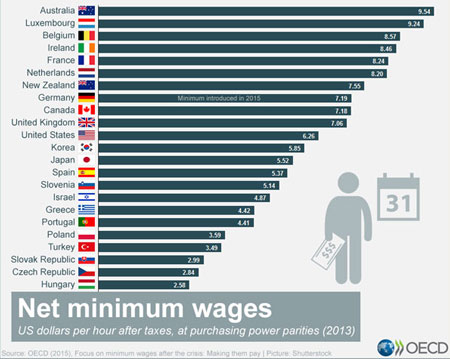1. PURCHASING POWER PARITY (PPP)
The Purchasing Power Parity (PPP) model or else the “law of one price” estimates the adjustment needed on the exchange rate between countries for the exchange to be equivalent to each currency's purchasing power.
PPP Basic Assumptions
PPP assumes that if there are no barriers to free trade the price of the same commodities must be the same everywhere in the world. Based on that assumption, the exchange rate between two economies must fluctuate towards a long-term value that ensures the equilibrium of commodity pricing.
Key Points regarding the PPP Analysis:
-
PPP analysis is based on several assumptions, including homogeneous products and the absence of trade restrictions
-
PPP analysis can be used only for tradeable goods and not for non-tradable goods such as services
-
In reality, only the prices of internationally traded goods tend to balance out
-
PPP analysis is useful for long-term currency valuation
-
There can be significant divergences between currency valuations and PPP, especially in the short-term
-
PPP analysis is particularly useful for corporations, carry traders, and other long-term thinkers
-
PPP analysis is useless for short-term currency traders
Calculating the PPP
The price parity between the two countries is formulated as:
■ e = Pd / Pf
This can be also expressed as:
■ Pd = e x Pf
where:
-
-
-
e = The PPP equilibrium exchange rate value
-
Pd = Domestic price level of a commodity
-
Pf = Foreign price level of a commodity
-
-
Different ways to calculate the PPP
There are two different ways to calculate the Purchasing Power Parity (PPP):
(a) Absolute PPP {equilibrium = Domestic Price Index / Foreign Price Index}
(b) Relative PPP {equilibrium = Domestic Price Index - Foreign Price Index}
Practically, to calculate PPP:
(i) Create a basket of traded goods and services in two countries
(ii) Price the two baskets
(iii) Compare the two baskets and identify an exchange rate that would make the pricing of those two baskets identical
OECD PPP Reports and the Big Mac index
OECD (Organization for Economic Co-Operation and Development) uses PPP to issue several economic reports. OECD prices a basket of goods and services in each country member and calculates the PPP rates. ► OECD PPP Reports

The Big Mac Index by the Economist is an alternative PPP method introduced in 1986. The Big Mac Index is based on the assumption that a Big Mac burger costs the same in every country and consequently, its price in every country must be the same. ► The Big Mac Index
The Problems when using the PPP
PPP assumes that there are no barriers to trade. But actually, there are a lot of barriers and other similar anomalies in international trade. Moreover, Forex currencies can remain overvalued for long periods. For example, the Swiss Franc (CHF) has remained overvalued, on a PPP basis, since the 80s.
These are some factors disturbing PPP analysis:
-
The traded goods are not perfectly homogeneous
-
There are several barriers to international trade
-
Restricting government policies (such as tariffs)
-
Speculation in the prices of goods
-
Transportation costs
-
Transaction costs
-
Multinational corporations usually delay the re-adjustment of prices across different markets
-
PPP analysis may not hold for services and other non-tradable goods
-
PPP analysis may not hold even for homogeneous commodities as the pricing between economies depends on local market dynamics
■ PURCHASING POWER PARITY (PPP)
CurrenciesFx.com (c)
> READ MORE ON MACRO

